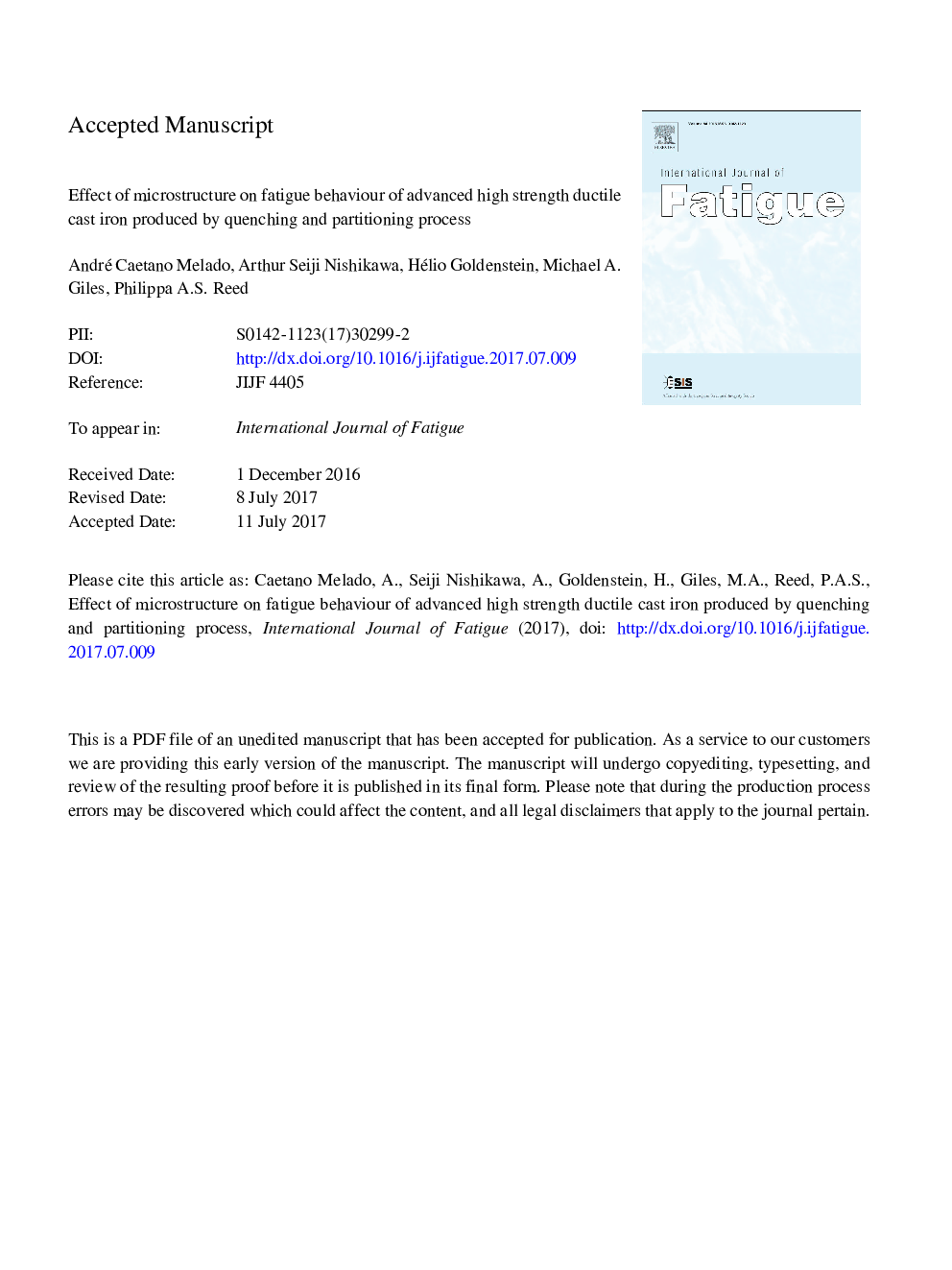| کد مقاله | کد نشریه | سال انتشار | مقاله انگلیسی | نسخه تمام متن |
|---|---|---|---|---|
| 5015034 | 1463718 | 2017 | 20 صفحه PDF | دانلود رایگان |
عنوان انگلیسی مقاله ISI
Effect of microstructure on fatigue behaviour of advanced high strength ductile cast iron produced by quenching and partitioning process
ترجمه فارسی عنوان
تأثیر ریزساختار بر رفتار خستگی از آهن پیشرفته مقاوم در برابر چدن تولید شده توسط فرآیند خشک کردن و پراکندگی
دانلود مقاله + سفارش ترجمه
دانلود مقاله ISI انگلیسی
رایگان برای ایرانیان
کلمات کلیدی
گرما درمان چدن آستنیت باقیمانده، خنک سازی و پارتیشن بندی، پایداری آستنیت،
موضوعات مرتبط
مهندسی و علوم پایه
سایر رشته های مهندسی
مهندسی مکانیک
چکیده انگلیسی
The fatigue behaviour of high strength ductile cast iron produced by a quenching and partitioning process (Q&P) is evaluated. The Q&P process is receiving increased attention as a new way to produce ultra-high strength steels with multiphase microstructures composed of a martensite matrix and substantial amounts of carbon-stabilized retained austenite. Currently, the mechanical properties arising from applying the Q&P process in ductile cast irons have not been investigated. Thermal treatments consisted of heating the material to 880 °C for a 2 h soaking time followed by quenching in oil at 140 °C and 170 °C, intermediate temperatures between Ms and Mf allowing the formation of a controlled amount of athermal martensite. The material was reheated to 300 °C and 375 °C (the partition treatment) for different times between 15 and 120 min and subsequently air-cooled to room temperature. Microstructural evolution and carbon partitioning was investigated by in situ synchrotron X-ray diffraction. With a microstructure composed of tempered martensite, bainitic ferrite and carbon-enriched stabilized austenite, a new class of properties was obtained, with an enhanced strength when compared to ADI (austempered ductile iron) while still maintaining reasonable elongation. Fatigue testing was undertaken using polished plain bend bars (no stress concentration features) assessed under four-point bending. Uninterrupted tests at varying loads show that the higher partitioning temperature is beneficial for fatigue life. Fracture initiation sites are primarily from pores and a number of decohered graphite nodules. A strong influence of the microstructure on subsequent fatigue crack growth is observed from interrupted testing with replica records and SEM examination of tested samples, with cracks exhibiting significant tortuosity, at times even appearing to grow approximately parallel to the tensile axis. Using these results, the effects of the Q&P treatment, particularly the role of the partitioning time and temperature, on the fatigue properties of ductile cast iron are assessed.
ناشر
Database: Elsevier - ScienceDirect (ساینس دایرکت)
Journal: International Journal of Fatigue - Volume 104, November 2017, Pages 397-407
Journal: International Journal of Fatigue - Volume 104, November 2017, Pages 397-407
نویسندگان
André Caetano Melado, Arthur Seiji Nishikawa, Hélio Goldenstein, Michael A. Giles, Philippa A.S. Reed,
